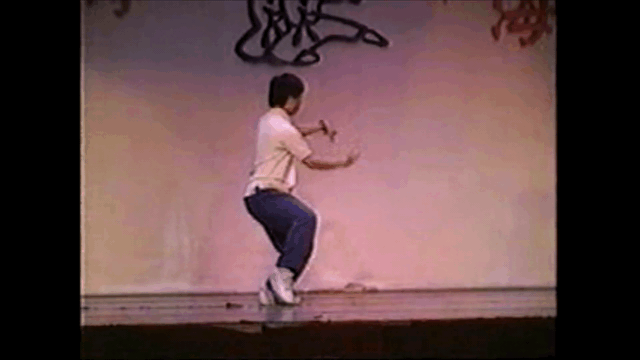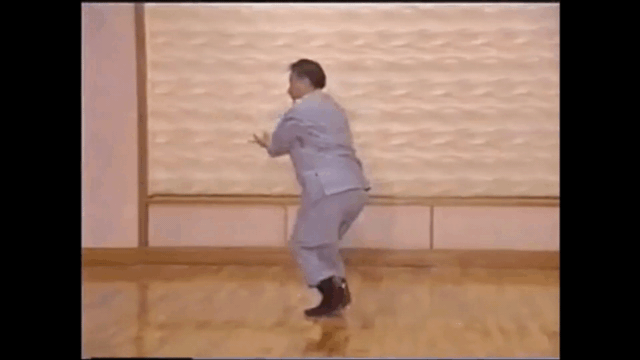Page 2 of 3
Re: What is internal? Finally, the answer...

Posted:
Wed Mar 17, 2021 8:18 amby Steve James
all about going on the internet and telling other people they were wrong.
But, what else is the internet for, especially when it comes to "internal"? This was perhaps the oldest debate in tcma when internet bulletin boards (alt-rec-martialarts) were born.
Re: What is internal? Finally, the answer...

Posted:
Wed Mar 17, 2021 1:30 pmby rojcewiczj
For me, internal external is only as useful as the terminology relates to practical differences in technique/combat method. Internal/External is essentially just a way to say this/that, similar to saying yin/yang; It doesn't really matter which is yin or which is yang, only that one is this and the other is that.
That being said, the way I use "internal" is to talk about how we generate power. When you have a distance, if your outside moves to cover that distance (your limbs), that is an external movement. When your inside (torso) moves to cover a distance, that movement is internal. When you move through the distance that your opponent is in, you encounter resistance. If you are trying to cover the distance with your arms, you'll feel you need a lot of strength in your arms to move through your opponents resistance. If you are moving through the range with your torso, you'll feel that your leg/core strength, coupled with your mass/structure, allows you to move through much greater resistance with less effort.
Practically speaking and according to my methodology, internal training is to expand the range of the torso movement so as to be capable of moving through a greater range, cover more distance, and overall move through your opponents resistance much easier than external methods.
Re: What is internal? Finally, the answer...

Posted:
Thu Mar 18, 2021 12:19 pmby Doc Stier
All fighting arts incorporate both 'internal' and 'external' components in varying degrees. However, by direct comparison, every authentic IMA style emphasizes a more conscious, deliberate study and investigation of mental functions, as they relate to combat arts. Thus, these may include the use of meditation, contemplation, self-hypnosis, auto-suggestion, mental visualizations and verbal affirmations, etc, as an integral part of a training regimen. Results vary according to personal efforts.
Re: What is internal? Finally, the answer...

Posted:
Thu Mar 18, 2021 12:31 pmby shawnsegler
In a hundred years social historians will look back at this strange obsession over internal amongst martial artists at the turn of the century and decide it was all about going on the internet and telling other people they were wrong.
Except for when it's people talking about how they're right.
Re: What is internal? Finally, the answer...

Posted:
Thu Mar 18, 2021 12:51 pmby JessOBrien
Training advice of Li Cun Yi from Hsing-I: Chinese Mind-Body Boxing by RW Smith:
"The main purpose of Hsing-i, Pa-kua and T'ai-chi is to develop the one ch'i, so that the inner strength becomes great.
Carefully examine your opponents- their bearing, gestures, and manner of speaking. This is internal boxing, as contrasted with external boxing.
Often it is difficult to feel whether an opponent is an internal or external boxer. I have seen some who appear soft as a pretense. I have been tricked, but I was never killed because I stayed alert."
Re: What is internal? Finally, the answer...

Posted:
Fri Mar 19, 2021 7:56 amby Quigga
Re: the observation of / gathering intelligence from another person / letting the impression of another body through:
Serge Augier has nice info on this in Urban Violence:
https://lineofintent.com/product/urban- ... ge-augier/And it's a topic I would file under listening to energy.
Edit: I imagine Dr. Glen Morris and Santiago Dobles have much more info on this in Hoshin Jutsu and Ninpo (hope it's spelled right).
Re: What is internal? Finally, the answer...

Posted:
Fri Mar 19, 2021 8:00 amby suckinlhbf
don't see how any "external" martial art work consciously and directly on this, not even on unifying the body as one whole. And even less on unifying the unifies body with mind, breath and spirit.
I briefly learned Shaolin, Hung Ka, Southern praying mantis (if they are "external"), they do work on unifying the body as one whole, and the unifies body with mind, breath and spirit. "One Qi" is their basic foundation training.
Re: What is internal? Finally, the answer...

Posted:
Fri Mar 19, 2021 9:23 amby Dmitri
Re: What is internal? Finally, the answer...

Posted:
Fri Mar 19, 2021 11:11 amby Bao
suckinlhbf wrote:I briefly learned Shaolin, Hung Ka, Southern praying mantis (if they are "external"), they do work on unifying the body as one whole, and the unifies body with mind, breath and spirit. "One Qi" is their basic foundation training.
I don’t doubt that they
can be internal as well as other styles, but I believe that the different schools vary a lot. I’ve practiced a bit of external Shaolin and Hunggar. They moved with their body parts individually and disconnected. No unification there. I’ve also practiced internal Shaolin and learned an internal Hunggar set.
Re: What is internal? Finally, the answer...

Posted:
Fri Mar 19, 2021 11:42 amby johnwang
Re: What is internal? Finally, the answer...

Posted:
Fri Mar 19, 2021 12:00 pmby Bao
johnwang wrote:Bao wrote:I’ve practiced a bit of external Shaolin and Hunggar. They moved with their body parts individually and disconnected. No unification there.
All body parts start to move at the same time, and also all body parts stop at the same time is the basic training requirement for all CMA systems.
For most of the northern styles it should be a basic requirement or a general principle. However, if you watch southern styles as Wing Chun or White Crane they often don’t. Even in northern styles that rule is not always prevalent as in Tan Tui sets.
https://youtu.be/eQ0MhvPlTTc
Re: What is internal? Finally, the answer...

Posted:
Fri Mar 19, 2021 1:02 pmby GrahamB
Jess - I quite like "when the Qi is one" as a definition of internal. Specifically because it can apply to music, dance or art too.
I'm entirey happy with the idea that "internal" can have a function for classification and sorting, but simultaneously lack any meaning.
Re: What is internal? Finally, the answer...

Posted:
Fri Mar 19, 2021 1:21 pmby marvin8
johnwang wrote:Bao wrote:I’ve practiced a bit of external Shaolin and Hunggar. They moved with their body parts individually and disconnected. No unification there.
All body parts start to move at the same time, and also
all body parts stop at the same time is the basic training requirement for all CMA systems.
johnwang wrote:Unless we want to throw away the basic CMA building block "6 harmony", the hand and foot coordination is a must. There should be no feet stop moving but hand is still moving.
You appear to contradict yourself (or I'm not understanding). Can you explain your following posts?
"
Long fist punch vs. Taiji punch:"
johnwang wrote:
"
Coordinate your punch with your foot landing:"
johnwang wrote:In this clip, his striking arm coordinates with his back leg.

Re: What is internal? Finally, the answer...

Posted:
Fri Mar 19, 2021 1:51 pmby suckinlhbf
I’ve practiced a bit of external Shaolin and Hunggar. They moved with their body parts individually and disconnected.
Even when we look at the "internal" xingyi, bagua, taiji practitioners, a lot of them moves their body parts individually and disconnected. It is on where they are at.
Re: What is internal? Finally, the answer...

Posted:
Fri Mar 19, 2021 3:17 pmby johnwang
marvin8 wrote:You appear to contradict yourself (or I'm not understanding). Can you explain your following posts?
When you hold on some weight (such as a brick), your arm is hard to stop when your leg stop moving. The brick momentum will pull your arm forward even if your hand stops completely.
Today, this is the only "cross" that I like to train. But I can't hold on weight and punch like this (weight and speed don't go together).



